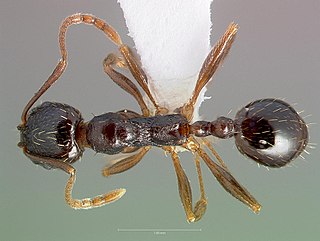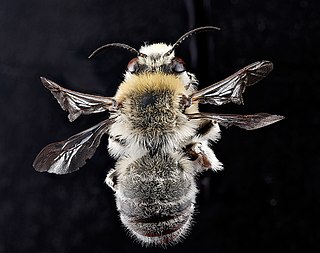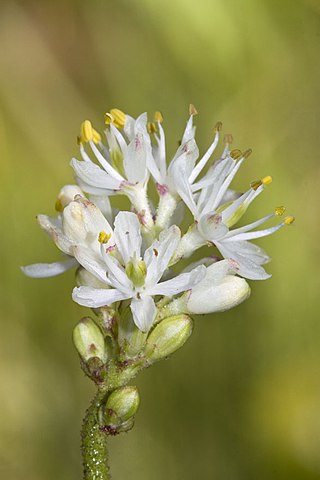
The brown pelican is a bird of the pelican family, Pelecanidae, one of three species found in the Americas and one of two that feed by diving into water. It is found on the Atlantic Coast from New Jersey to the mouth of the Amazon River, and along the Pacific Coast from British Columbia to Peru, including the Galapagos Islands. The nominate subspecies in its breeding plumage has a white head with a yellowish wash on the crown. The nape and neck are dark maroon–brown. The upper sides of the neck have white lines along the base of the gular pouch, and the lower fore neck has a pale yellowish patch. The male and female are similar, but the female is slightly smaller. The nonbreeding adult has a white head and neck. The pink skin around the eyes becomes dull and gray in the nonbreeding season. It lacks any red hue, and the pouch is strongly olivaceous ochre-tinged and the legs are olivaceous gray to blackish-gray.

Juniperus occidentalis, known as the western juniper, is a shrub or tree native to the Western United States, growing in mountains at altitudes of 800–3,000 meters (2,600–9,800 ft) and rarely down to 100 m (330 ft). It is listed as Least Concern on the IUCN Red List because it is a widespread species with an increasing population.

Cephalanthus occidentalis is a species of flowering plant in the family Rubiaceae that is native to eastern and southern North America. Common names include buttonbush, common buttonbush, button-willow, buck brush, and honey-bells.

Olof Peter Swartz was a Swedish botanist and taxonomist. He is best known for his taxonomic work and studies into pteridophytes.

Senna occidentalis, commonly known as coffee senna, styptic weed, or septicweed, is a species of flowering plant in the family Fabaceae and is native to the southern United States of America, Mexico and South America. It is a shrub with pinnate leaves, with three to seven pairs of broadly elliptic to egg-shaped leaflets, and yellow flowers arranged in groups of two to four, with six fertile stamens in each flower. It is an aggressive, pantropical weed.

"Occidentali's Karma" is a song performed by Italian singer Francesco Gabbani. The song was released as a digital download on 10 February 2017 through BMG Rights Management as the lead single from his third studio album Magellano (2017). The song was written by Gabbani, Filippo Gabbani, Fabio Ilacqua, and Luca Chiaravalli. It won the Sanremo Music Festival 2017 and represented Italy in the Eurovision Song Contest 2017, finishing in sixth place.

Aphaenogaster occidentalis is a species of ant in the family Formicidae.
Spilomena hainesi is a species of aphid wasp in the family Pemphredonidae. It is found in North America.

Anthophora occidentalis is a species of anthophorine bee in the family Apidae. It is found in North America.
Celina occidentalis is a species of predaceous diving beetle in the family Dytiscidae. It is found in North America and the Neotropics.
Stenelmis occidentalis is a species of riffle beetle in the family Elmidae. It is found in Central America and North America.
Cephaloscymnus occidentalis is a species of lady beetle in the family Coccinellidae. It is found in North America.
Neolepolepis occidentalis is a species of scaly-winged barklouse in the family Lepidopsocidae. It is found in North America.
Limnephilus occidentalis is a species of northern caddisfly in the family Limnephilidae. It is found in North America.

Siphlonurus occidentalis is a species of primitive minnow mayfly in the family Siphlonuridae. It is found in Central America to North America. In North America its range includes southwestern, northern Canada, all of Mexico, the western United States, and Alaska.
Bembix occidentalis is a species of sand wasp in the family Crabronidae. It is found in Central America and North America.

Ligia occidentalis is a species of rock slater in the family Ligiidae. L. occidentalis is a habitat generalist of rocky shores. It is found in North America and Mexico. The western sea slater is separated from L. pallasi by its much longer uropods and its larger eyes, set closer together along with its sleeker body. This species has a tendency to bolt when disturbed. These sea slaters hide in rocky crevices above the high tide line during the day. It may emerge at night or in cooler weather to scavenge for algae and detritus along beaches or rocky cliffs. Western sea slaters must keep their gills moist in order to breathe but they cannot survive long underwater and will drown.
Leskia occidentalis is a species of bristle fly in the family Tachinidae. It is found in North America.
Plantae preissianae sive enumeratio plantarum quas in australasia occidentali et meridionali-occidentali annis 1838-1841 collegit Ludovicus Preiss, more commonly known as Plantae preissianae, is a book written by Johann Georg Christian Lehmann and Ludwig Preiss.

Triantha occidentalis, the western false asphodel, is a species of carnivorous flowering plant in the genus Triantha from the family Tofieldiaceae within the order of the Alismatales. It is found in the Pacific Northwest. It was recognised as a carnivorous plant in 2021, a rare occurrence within the Monocot clade.










